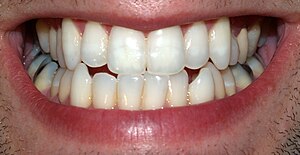[amazon_link asins=’B009RV7ORK,B001DAYJOY,B06XYWPZG2,B00068S95O,B012EU2SS0,B005LTH1PW,B000P05IL6,B0058AAK8E,B017XIMBS0′ template=’ProductCarousel’ store=’finmeacur-20′ marketplace=’US’ link_id=’2d3da7b9-6323-11e7-a185-572c8b3985e8′]
Botanical Name :Turnera diffusa
Family: Passifloraceae
Genus: Turnera
Species: T. diffusa
Kingdom: Plantae
Order: Malpighiales
Synonym:Turnera diffusa aphrodisiaca
Common Name:Damiana
Habitat :Turnera diffusa is native to southwestern Texas in the United States, Central America, Mexico, South America, and the Caribbean
Description:
Turnera diffusa is a relatively small shrub that produces small, aromatic flowers. It blossoms in early to late summer and is followed by fruits that taste similar to figs. The shrub is said to have a strong spice-like odor somewhat like chamomile, due to the essential oils present in the plant. The leaves have traditionally been made into a tea and an incense which was used by native people of Central and South America for its relaxing effects. Spanish missionaries first recorded that the Mexican Indians drank Damiana tea mixed with sugar for use as an aphrodisiac
click to see the pictures…..>..….(01).....…..(1)..…..(2)…...(3)..
Cultivation:
Requires a dry soil in a warm sunny sheltered position. One report says that this species is hardy to about -5°c, though this needs to be treated with some caution considering its native range is entirely tropical. It is possible that, whilst the plant will be cut back to the ground by cold weather, the rootstock is hardier and will re-sprout in the spring. It will certainly be worthwhile trying the plant outdoors and giving the roots a thick protective mulch in the autumn.
Propagation:
Seed – sow spring in a greenhouse. Prick out the seedlings into individual pots once they are large enough to handle and grow them on in the greenhouse for at least their first winter. Plant them out into their permanent positions in early summer and give some protection from winter cold for at least their first winter outdoors. Division in spring or autumn. Cuttings of half-ripe wood, July/August in a frame. Overwinter the young plants in a greenhouse and plant them out in early summer.
Constituents: leaves: greenish volatile oil consisting of cineole, p-cymene, alpha- and beta-pinene, thymol, alpha-copaene, and calamene. the dry matter of the leaf includes damianin as well as tannins, flavonoids, beta-sitosterol, and the glycosides gonzalitosin, arbu
Medicinal Uses: * Aphrodisiac * Libido * Prostate
Properties: * Aphrodisiac * Astringent * Bitter * Nervine * Stimulant * Tonic
Parts Used: Leaf
Turnera diffusa has long been claimed to have a stimulating effect on libido, and its use as an aphrodisiac has continued into modern times. More recently, some corroborating scientific evidence in support of its long history of use has emerged. Several animal testing studies have shown evidence of increased sexual activity in rats of both sexes. Damiana has been shown to be particularly stimulating for sexually exhausted or impotent male rats as well as generally increased sexual activity in rats of both sexes. It has also been shown that damiana may function as an aromatase inhibitor, which has been suggested as a possible method of action for its reputed effects.
Turnera diffusa might be effective as an anxiolytic.
Turnera diffusa is an ingredient in a traditional Mexican liqueur, which is sometimes used in lieu of Triple Sec in margaritas. Mexican folklore claims that it was used in the “original” margarita. The damiana margarita is popular in the Los Cabos region of Mexico.
Turnera diffusa was included in several 19th century patent medicines, such as Pemberton’s French Wine Coca. The leaves were omitted from that product’s non-alcoholic counterpart, Coca-Cola.
Turnera diffusa is used primarily as an aphrodisiac for both sexes 1, and as a stimulant that can boost mental focus and stamina.
The health benefits of damiana are for the most part only verified by folklore and long observation, not by scientific study, however chemical analysis shows that damiana contains alkaloids similar to caffeine that have stimulating and aphrodisiac effects, stimulating blood flow to the genital area and increasing sensitivity. Some people report feelings of mild euphoria. Damiana is often combined with saw palmetto in formulas that address male prostate health.
Known Hazards : Tetanus-like rigidity and genitourinary irritation in one patient. Possible hallucinations. May affect the control of blood sugar in diabetic patients
Disclaimer : The information presented herein is intended for educational purposes only. Individual results may vary, and before using any supplement, it is always advisable to consult with your own health care provider
Resources:
http://www.anniesremedy.com/herb_detail201.php
http://en.wikipedia.org/wiki/Turnera_diffusa
http://www.pfaf.org/user/Plant.aspx?LatinName=Turnera+diffusa+aphrodisiaca
















![Reblog this post [with Zemanta]](https://i0.wp.com/img.zemanta.com/reblog_e.png?w=580)